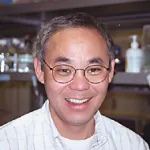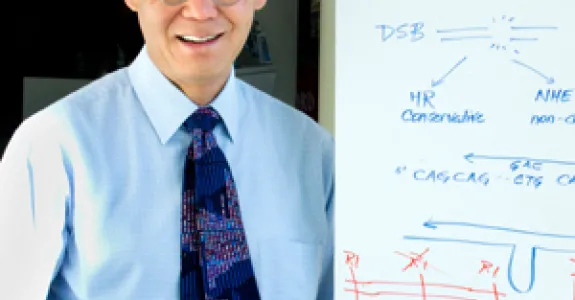
Dr. Chu's laboratory focuses on understanding how cells respond to DNA damage. To understand how DNA damaged by ultraviolet radiation is targeted for repair, we identified UV-damaged DNA binding activity (UV-DDB). They showed that the DDB2 subunit of UV-DDB is mutated in xeroderma pigmentosum group E patients; that DNA damage induces transcription of the DDB2 gene via a p53 response element; and that DDB2 enhances global genomic repair and suppresses mutagenesis.
To understand how DNA double-strand breaks are repaired, they have characterized nonhomologous end-joining (NHEJ), the pathway that repairs double-strand breaks produced by ionizing radiation and V(D)J recombination, the process that generates immunological diversity. They showed: that Ku binds to DNA ends and recruits DNA-PKcs, which then undergoes activation of its kinase domain; that cell extracts recapitulate in vivo NHEJ and require XRCC4/Ligase IV to process the ends; and that Ku, XRCC4/Ligase IV and Cernunnos ligate mismatched non-cohesive ends.
They invented methods for analyzing microarray data: Significance Analysis of Microarrays (SAM) identifies genes with reproducible changes in expression and supplies a false detection rate from permutation of the data; and Prediction Analysis of Microarrays (PAM) finds and cross-validates genes that classify a sample by proximity to the nearest centroid for gene expression. They used these methods to find transcriptional responses to ionizing radiation that predict toxicity from radiation therapy. These results provide hope that treatment toxicity can be predicted by a clinical test.


